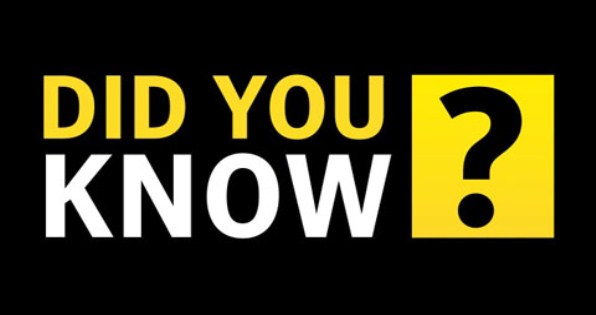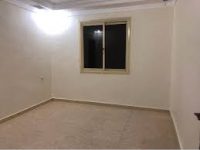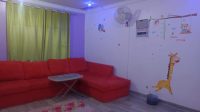Kuwait Facts

1. Until 1962, Kuwait celebrated its National Day on June 19, the anniversary of its independence, but in 1963 it changed it to February 25 to avoid the hot weather of June.
2. February 25 was the anniversary of Sheikh Abdullah becoming Emir of Kuwait in 1950. February 26, 2011 was the day Iraq’s occupying forces were driven out of Kuwait.
3. Kuwait has the world’s fifth largest oil reserves.
4. The national bird of Kuwait is the falcon.
5. There are 1.43 males to every female in Kuwait.
6. in 2006, Kuwait became the first country to introduce the sport of camel racing, with remote controlled robot jockeys.
7. When Saddam Hussein occupied Kuwait in 1990 and named it the 19th Province of Iraq some dissidents called it “Wimbledon” which is SW19.
8. Kuwait has won two Olympic medals, both bronze for Fehaid Al-Dehani at trap shooting.
9. Kuwait is the only country in the world with no natural water supply from lakes or reservoirs but it did open its first grass golf course in 2005.
10. Eating, drinking, playing loud music and dancing during daylight hours in public are against the law in Kuwait during the month of Ramadan.
11. Kuwait comprises of nine islands which are mainly oil rich desserts. It is officially known as the “State of Kuwait.” Kuwait City is the capital of Kuwait that is situated on Kuwait Bay.
12. Majority of the people in Kuwait follow Islam.
13. One of the hottest countries in the world especially between June to August. Rainfall averages 2 days in the year. Kuwait has several sandstorms every year.
14. The official currency used in the Kuwaiti dinar. The name means “Fortress built near water.”
15. Falcon found everywhere and also seen on the currencies and stamps.
16. Kuwait has the second-most free economy in the Middle East. It is the fourth-richest country in the world in terms of per capita income.
17. Petroleum and petroleum-products made up nearly 85% of export revenues and 80% of government income in Kuwait. Major industries include construction, shipping, cement, water desalination, construction materials and financial services.
18. The main ethnic groups in Kuwait include Kuwaiti, other Arab, South Asian and Iranian.
19. Kuwait’s oil fields were discovered and exploited in the 1930s.
20. Petroleum and petroleum products make up around 95 percent of export revenues, and 80 percent of government income, in Kuwait.
21. The island of Failaka in Kuwait was an ancient trading post.
22. Kuwait came under the leadership of the Al Sabah family in 1750s, with semi-autonomy from the Ottomans.
23. Kuwait entered the Special Treaty of Friendship with Britain in 1899, to prevent the occurrence of Ottoman direct rule.
24. The borders between Kuwait, Iraq and Saudi Arabia were agreed in the 1920s and 1930s.
25. Kuwait became a member of the Arab League in 1961 and that of United Nations in 1963.
26. Kuwait was the first Arab country in the Gulf to have an elected parliament.
27. Full political rights were granted to women in Kuwait, in 2005.
28. Kuwaiti men usually wear the national dress of long white dishdashes and white headcloths, while women wear yashmaks.
29. Kuwaiti food is primarily based on the staple product of rice.
30. Kuwait is one of the smallest countries in the world.
31. The Kuwaiti dinar (kd) has 1,000 fils. There are coins of 1, 5, 10, 20, 50, and 100 fils, and notes of 250 and 500 fils and of 1, 5, 10, and 20 Kuwaiti dinars. kd1 = $3.44828 (or $1 = kd0.29) as of 2005.
32.The flag, adopted in 1961, is a rectangle divided equally into green, white, and red horizontal stripes, with a black trapezoid whose longer base is against the staff and equal to the breadth of the flag, and whose shorter base is equal to the breadth of the white stripe.
32. The Kuwaiti national anthem is by poet Ahmad Meshari Al-Adwani, Ibrahim Al-Soula composed the music and Ahmad Ali arranged the composition. It was first broadcast on 25 February 1978. Before 1978 Amiri Salute was used. It was composed by Yusuf Adees in 1951.
33. Kuwait consists almost entirely of flat rolling desert and mud flats. There is a 1,137-m (450-ft) ridge at Mina’ al-Ahmadi and a 290-m (951-ft) prominence in the southwest corner. There are no permanent rivers or lakes, but there are some desert wadis that collect water during the rains.
34. Weather
35. Migration: With the discovery of oil and the consequent rise in living standards, Kuwait acquired a large immigrant population, attracted by jobs, free education for their children, and free medical care. The number of foreign residents more than doubled during the 1970s, and in 1994 they accounted for an estimated 56.4% of the population. After the Persian Gulf war, Kuwait deported tens of thousands of foreign workers from countries whose leaders had backed Iraq in the conflict. Of the estimated 400,000 Palestinians living in Kuwait before the 1990–91 Gulf War, reportedly only about one-sixth were allowed to remain. Only about 120,000 of the 220,000 prewar Bedouins (mostly nomads from Syria, Jordan, and Iraq) were allowed to stay. These stateless Arabs had remained in Kuwait under Iraqi occupation and were suspected of collaboration. Most other foreign workers were able to return to their home countries. By 1996, however, Egyptians, Pakistanis, Filipinos, and others had filled the void that the previous foreign workers had left behind. Kuwait carried out amnesty plans for illegal foreigners in 1988, 1996, and 2002.
In 2000, there were 1,108,000 migrants living in Kuwait. This accounted for 57.9% of the population. The number of refugees that year was 2,800. In 2004, there were 1,519 refugees and 157 asylum seekers. The number of persons of concern to the United Nations High Commissioner for Refugees (UNHCR) was 102,676, made up of 80,000 stateless Bedouins, 13,000 Iraqis, 6,000 Palestinians, and 2,000 Somalis. In 2005, the net migration rate was an estimated 14.96 migrants per 1,000 population. the government views the immigration level as too high.
36. Kuwait has no territories or colonies.
37. Libraries & Museums : The National Library of Kuwait has over 150,000 volumes, 90% of them in Arabic; it has established 22 branches throughout the country. The Kuwait University Library system has over 294,000 volumes. The Arab Planning Institute in Safat has a library of about 48,000 volumes. Other schools and oil companies maintain special libraries. The Kuwait National Museum in Kuwait City displays ancient Kuwaiti artifacts (recovered from excavations on Faylakah Island), as well as exhibits concerning Islamic art, and local plant, bird, and animal life. The Kuwait Museum of Islamic Art in Kuwait City was founded in 1983. The Educational Science in Safat Museum was established in 1972 and features sections on natural history, space, oil, health, and meteorology.
38 : As per the survey and study by LSE Citi, 34% of Kuwait total population (Expats and locals) live in apartments, 65% in houses and 1% in industrial areas.

39 : Companies that are registered in Kuwait or in countries that are members of the Gulf Cooperation Council (GCC) and are wholly owned by Kuwaiti and/or citizens of GCC countries are not subject to income tax. However, foreign companies carrying on trade or business in Kuwait are subject to varying corporate tax rates based on defined income levels and where the operations are located.
40 : Majority spend much of their free time socializing with family members and friends.
41 : The word “Shlonich” in common spoken language is used to say “How are you?” but in other arab countries the meaning of “Shlonich” is “What is your color?”
42 : It is very common to keep two mobile phones. specially among locals.
43 : Meals are generally served family-style. Guests are served first. Then the oldest, continuing in some rough approximation of age order until the youngest is served.
44 : The only real surviving traditional Kuwaiti handicraft weaving is called Sadu, which is generally created in the colors of red and black.
45 : Al Hamra Building in Kuwait is world 26th longest building.
46 : In 2007, The Avenues was officially opened boasting the largest Ikea in the Middle East, as well as over 150 internationally known brand-name shops.
47 : In washroom, Cold water is like hot water and hot water is like suicidal water due to weather and Desalination.
48 : Kuwait has the highest water consumption level in the world with a daily use of around 500 litres per capita, more than double the average international rate.
49 : 1994/95 an ISP charged 45 KD for a dial up connection that connects 2 hours then u need to redial and wait for hours to reconnect
50: Kuwait is the first Gulf country to have established a constitution and parliament.
51: If a man presents a woman with a gift, it cannot come from him but must come from his wife, mother, sister or another female relative.
52: The KIA (Kuwait Investment Authority) is the world’s oldest sovereign wealth fund. Kuwait is also the largest investor from the Arab world. An estimated $8.4 billion was invested by Kuwait in FDI during 2013.
53: Kuwait’s national anthem is called Al-Nasheed Al-Watani and the lyrics were written by poet Ahmad Meshari Al-Adwani, first played in 1978.
54: There are no railways in Kuwait.
55: Kuwait also appears on the list of the world’s top-ten ‘fattest’ countries. They give preference to a rich diet and do not involve in exercising much.












Correct
I love Kuwait
My bad its the falcon
If im not wrong i think Kuwait's national bird is the golden eagle
I love Kuwait,
Nice and true comment
Then i would like to know wat do u mean by cheating?
Y is that kuwait is least in best countries for expats.. Y we hear "ana kuwaiti" everywhere, y only expats have to suffer..
Anyways, if u want to celebrate two different things celebrate on two different days. Independence of nation is always important than anything else. I am not sure of arabic mentality but i hv noticed u r still dependent on western culture. Roots of islamic culture is lost. M sorry if my words hurt u. Correct if my views are wrong
yes, u said it !!!!
For us kuwaitis, the day Abdullah elsalim became the ruler was mire important than the independant day, after all he is the one who brought that day, he is the one who established the parlimant and every thing good abd honirabke that kuwait still enjoys… We miss him…. We are very proud of 25th Feb… abd we will always be… one more thing.. LAZINESS IS MUCH BETTER THAN CHEATING…
Yes madam. You are right. I agree
And did you know that many kuwaities whi were genuin kuwaitis have no kuwaiti Id's!!!in the old days theur parents did not believe in papers they were kuwaitis by birth and life !! So their kids stayed with no documents till this day.
Fact 28 about women wear is noy Yashmak, which is worn mainly in Turkey and as a result Egypt and Syria at the Othuman rule. Women in kuwait used to wear Abaya and bosheyah in the old days. The baduin women borqea.
you find that this us the case at where you come from my dear..
Kuwait is good country but their some misbehaviour are they doing that will affect his good persons also during that spoil the name
Kuwait is good country but their some misbehaviour are they doing that will affect his good persons also during that spoil the name
Did you know expats cannot buy pickup for unknown weird reason
Nice history
one more fact, that this is a nation who changes its celebration day from June to Feb, just bcz of weather… one can imagine what kindf people they are.. I will call it lazy
Maybe you did not read correctly. It was changed because of the weather.
I assume this means that more celebrations can take place.
It is certainly not a case of laziness, whereas you are rude.
did you know some of the asian expats came in 50's or even 40's are still an expats that's one of the fact they forgot to mention
I love Kuwait
Isn't Fahad Al-Dehani the bedoon (no nationality) guy whose gun jammed in one of the competitions and a Qatari contender lent him his gun (because the competitors are not sponsored/financially assisted by the government and dude only had 1 gun)? I think he's the same guy, right? Facts behind the facts.
Kuwait does have water wells in North East Kuwait.
Point number 2 is wrong ! Pls recheck the facts.
February 26, 2011 was NOT the day Iraq’s occupying forces were driven out of Kuwait. It was February 26, 1991.
Great! The country doesn't have natural water supply, but the kids used potavle water for waterguns on the Gulf Road! Shame!!!
Croul and dishonest,mostly people
I hate Kuwait Labor Law for expats.
I hate Kuwait Labor Law for expats.
I love Kuwait . May Allah bless Kuwait .
It's good thing out kuwait may God bless always.
Facts
Thank you Kuwait. I love Kuwait.God Bless Kuwait. <3 <3 <3
Thank you Kuwait. I love Kuwait.God Bless Kuwait. <3 <3 <3